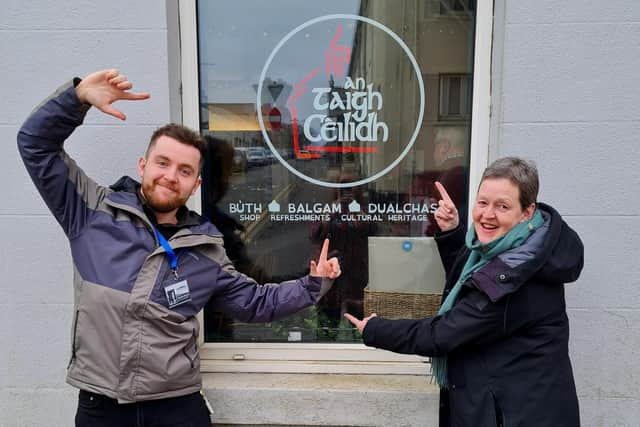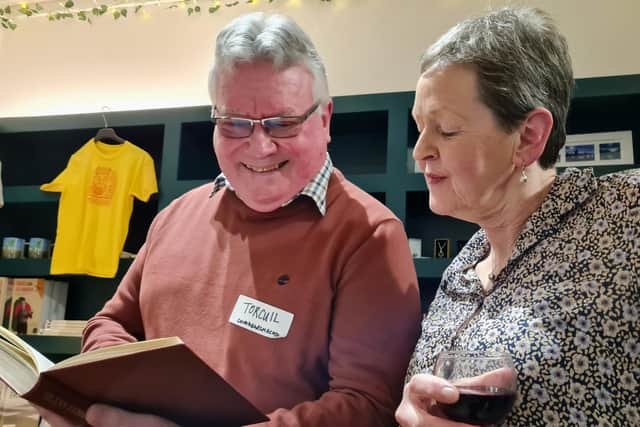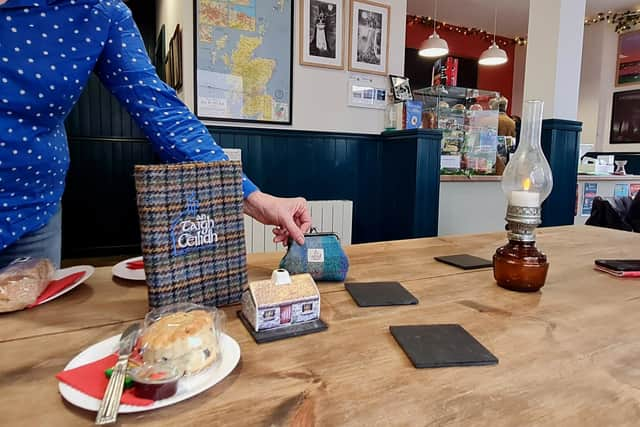Stornoway Gaelic Cafe ignites new hope for Scottish languages endangered in their own heartlands
Picture this – you discover a love of Spanish and decide to study it. After months of using Duolingo, watching Spanish TV and listening to Reggaeton, you set out to test what you’ve learned and jet off to Spain. However, upon arrival, you notice the only words you hear are English. Odd.
Well, no need to be discouraged, maybe you’re in the tourist district? Yet you venture further out to rural regions and still it's the only audible speech. It sounds bizarre, but this is reality for Scotland, with its native language Scottish Gaelic even as far out as its heartland on the Isle of Lewis in the Outer Hebrides.


Advertisement
Hide AdAdvertisement
Hide AdGaelic’s endangered status is nothing new. Despite buzz about Duolingo surpassing 1.5 million learners worldwide, other statistics paint a bleak picture. Dr Ingeborg Birnie, who has a PhD in Gaelic and public spaces, found 58 per cent of Lewis residents could speak Gaelic, but in Stornoway – the island’s main settlement – a mere 9 per cent of conversations publicly featured it. Once the area’s first language, the Celtic tongue has been largely relegated to the confines of classrooms and households in the wake of English-speaking dominance in society.
For other languages this would seem unthinkable, yet in Scotland this watering down of heritage is endemic. This inspired the birth of An Taigh Cèilidh (“the Cèilidh House”), which is a Gaelic Cafe co-founded by Teàrlach Wilson in the heart of Stornoway. In his career of learning languages like Italian – for which he visited Italy – upon tackling Gaelic he observed a sore lack of spaces where it could live in its home and so he created one.
The venue, backed by NatWest Social & Community Capital, opened in December and recently held an event with its supporters that I – despite knowing little Gaelic – was thrilled to attend.
At the event, Wilson initially asked Gaelic and English speakers to go to opposite ends of the cafe, making it easy to feel awkward and out of place. Yet later activities in the night like an organised sing-along in Gaelic, with simple lyrics, saw everyone regardless of ability come together under one beautiful chorus. It said a lot about the power such places hold to unite all backgrounds and create a gateway to Gàidhlig for newcomers.


However, calling it “just a Gaelic cafe” is like referring to Batman’s utility belt as just a stylish accessory. Both serve many functions and as the Stornoway Gazette reports, the venue will offer “conversation circles, singing workshops, parent and child clubs, live music performances, art and crafts” all in Gaelic.
Even for tourists, the cafe’s heart can be felt from the overall concept to its finer details. Once you enter, you break the beurla i.e., ‘ditch the English’ by being greeted in Gaelic with a fàilte (welcome) and feasgar math (good afternoon).
The embarrassment of trying Gaelic is overcome as a kind 10 per cent discount is offered to those ordering in it and supportive staff also help. Other motifs like crockery croft houses on tables filled with slow-burning peat – extracted from Lewis’ moorlands – expel an intoxicating earthy aroma and show the thought put into the venue.
Here, you speak the native tongue and quite literally breathe in the local heritage.
Advertisement
Hide AdAdvertisement
Hide AdNative speakers told me what the cafe meant to them. This included Gillebride MacMillan, a singer behind the Gaelic music of the hugely-popular TV series Outlander. He said: "For Gaelic to thrive, it needs spaces that people will go to in the knowledge that Gaelic will be spoken there. It is sometimes hard to develop a network of Gaelic speakers if you are unfamiliar with a particular place and so places like An Taigh Cèilidh are great initiatives … Cleach i no caill i (Use it or lose it).”


Local musician Torquil Macleod said the cafe was an “embarrassment-free zone” where someone could “speak freely” and “lose your inhibitions”. It is powerful feedback for a community that wrestles with stigma held against its language.
Support for the project has even been global. As far out as the US, which Duolingo revealed is the biggest hotspot for students outside of Scotland, people congratulated An Taigh Cèilidh. Carl Rogers, founder of Carl’s Lingo Kingdom on YouTube, embraces the Scots’ tongue even out in rural North Carolina.
He told me: “Gàidhlig is the heritage language I never knew I lost until I rediscovered it. It brings me joy daily as I learn more and teach my son… Gàidhlig gu bràth! (Gaelic forever).”
Such enthusiasm even thousands of miles away builds confidence in Gaelic’s viability for economic gain within education and tourism.


The Herald reported that some locals pushed back against the cafe and saw it as a “death knell” for local Gaelic, but the Stornowegians I spoke to did not echo this.
As written in the book Gaelic Without Groans first published by Eneas Mackay in 1934: “Little serious effort has yet been made to present Gaelic in a popular and attractive fashion, such as has been done in the case of French ... if Gaelic is to survive at all, a beginning along these lines must be made somehow, somewhere and by someone.”
The sentiment rings true even close to a century later. Pioneer work like An Taigh Cèilidh’s paves the way for future projects, which can take inspiration from its example.
Advertisement
Hide AdAdvertisement
Hide AdWhat makes a house a home? Like Spain without Spanish, native languages are integral to what makes a land homely. An Taigh Cèilidh is a ‘house’ by name, but as a space where Gaelic naturally thrives it’s a home for it too.
Comments
Want to join the conversation? Please or to comment on this article.
